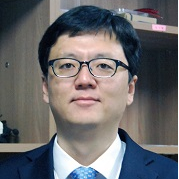Organic Optoelectronic Materials (Volume II)
A special issue of Crystals (ISSN 2073-4352). This special issue belongs to the section "Organic Crystalline Materials".
Deadline for manuscript submissions: closed (30 June 2021) | Viewed by 25239
Special Issue Editors
Interests: optics; electrooptical materials; optical films; liquid crystals
Special Issues, Collections and Topics in MDPI journals
Interests: nano-materials; electrooptical materials; heterogeneous catalysis
Special Issue Information
Dear Colleagues,
Organic optoelectronic materials are rapidly being commercialized at present. The liquid crystal display (LCD) is one of the most successful examples of commercialization of organic optoelectronic materials. The phase or polarization state of light can be modulated by an external electric field. Modulation efficiency can be enhanced provided that the organic medium has a large optical or electrical anisotropy. On the other hand, nanosized organic materials with physical anisotropy can also be used as sensors to detect external changes of environment. In addition, materials also have potential as energy-converting and -harvesting components. Following the first volume, we expand the scope of the topic and invite researchers to submit papers on various optoelectronic materials and devices. The issue includes the synthesis of new materials, analysis of physicochemical properties, and fabrication and instrumentation of optoelectronic devices.
Prof. Dr. Ji-Hoon Lee
Dr. Van-Chuc Nguyen
Dr. Nguyen-Hung Tran
Guest Editors
Manuscript Submission Information
Manuscripts should be submitted online at www.mdpi.com by registering and logging in to this website. Once you are registered, click here to go to the submission form. Manuscripts can be submitted until the deadline. All submissions that pass pre-check are peer-reviewed. Accepted papers will be published continuously in the journal (as soon as accepted) and will be listed together on the special issue website. Research articles, review articles as well as short communications are invited. For planned papers, a title and short abstract (about 100 words) can be sent to the Editorial Office for announcement on this website.
Submitted manuscripts should not have been published previously, nor be under consideration for publication elsewhere (except conference proceedings papers). All manuscripts are thoroughly refereed through a single-blind peer-review process. A guide for authors and other relevant information for submission of manuscripts is available on the Instructions for Authors page. Crystals is an international peer-reviewed open access monthly journal published by MDPI.
Please visit the Instructions for Authors page before submitting a manuscript. The Article Processing Charge (APC) for publication in this open access journal is 2600 CHF (Swiss Francs). Submitted papers should be well formatted and use good English. Authors may use MDPI's English editing service prior to publication or during author revisions.
Keywords
- Phase, polarization, and intensity modulation materials
- Coatable and printable materials for reflection and transmission control
- Optoelectronic materials for stretchable, bendable applications
- Electroluminescence and photoluminescence materials
- Liquid crystalline materials for display, telecommunication, and sensors
- Nano- and microstructured self-assembled materials
- Energy-converting and -harvesting organic materials
- One-dimensional and two-dimensional self-organized materials
- Transparent conducting materials
Related Special Issue
- Organic Optoelectronic Materials in Crystals (6 articles)







